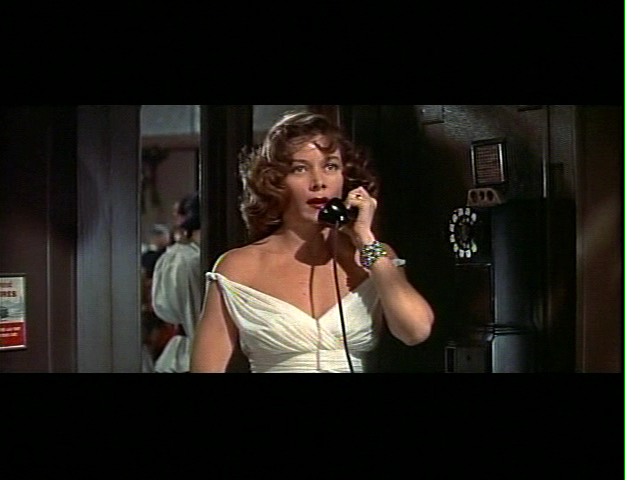
VINCENTE MINNELLI: THE ART OF ENTERTAINMENT, edited by Joe McElhaney, Detroit: Wayne State University Place, 2009, 458 pp.
In spite of my disappointment that Mademoiselle — Minnelli’s extraordinary centerpiece in The Story of Three Loves and surely one of his greatest films — gets virtually ignored here, this is a terrific critical collection, so I’m very grateful to Girish Shambu’s blog for calling my attention to it. Among the many treasures to be found here are what appears to be the very best French criticism about Minnelli, expertly translated by Bill Krohn, Jean-Pierre Coursodon, and Brian O’Keefe, including Raymond Bellour (on Brigadoon), Serge Daney (separate pieces on The Pirate and The Cobweb as they each appear on French TV), Jean Douchet (separate pieces on The Four Horsemen of the Apocalypse and Two Weeks in Another Town), Emmanuel Burdeau (who also has two pieces), and Jean-Loup Bourget. There are also sturdy contributions by, among others, Krohn himself, Scott Bukatman, Thomas Elsaesser, Adrian Martin, James Naremore, Dana Polan, Robin Wood, and two essays apiece by Geoffrey Nowell-Smith, David A. Gerstner, and the editor, Joe McElhaney.
Back in the mid-1980s, I published a survey about Minnelli’s work on video, titled (I believe) “In Dreams Begin Responsibilities,” which I seem to have misplaced — something I’m mentioning now only because I’ve often thought that this particular phrase from William Butler Yeats perfectly describes Minnelli’s auteurist thematics. Read more
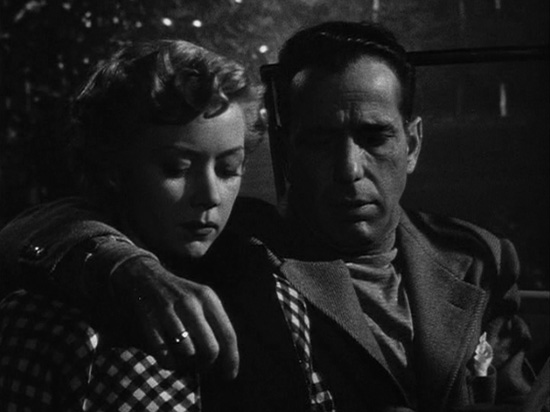
Recommended Reading: An excellent piece about In a Lonely Place, and Nicholas Ray more generally, by J. Hoberman in this week’s Village Voice. My only (minor) quarrel is with the following phrase: “An ex-Communist who was never persecuted, and must have wondered why…” From Bernard Eisenschitz’s definitive biography, one can pretty clearly surmise that Ray was protected from the Blacklist by Howard Hughes, for whom he was a sort of patch-up man, semipermanently on tap — something he must have been perfectly aware of. [7/17/09] Read more

Just because it isn’t available online doesn’t mean that Dudley Andrews’ interview with the great Jia Zhangke in the Summer 2009 issue of Film Quarterly isn’t the most aesthetically and politically eye-opening piece I’ve read so far anywhere about this filmmaker. And the fact that 24 City is on the cover, also illustrating James Naremore’s second annual ten-best piece for this magazine (which isn’t online either), should serve as a further incentive. [7/05/09] Read more

Put your cursor over each of the first three volumes. [5/30/09] Read more
A wealthy young Englishman (Ben Barnes) marries an American widow he meets in France (Jessica Biel) and brings her back to his family estate, causing various kinds of havoc. Noel Coward’s drawing-room comedy was loosely adapted by Alfred Hitchcock in 1928 but is seldom revived these days; assigning it to Australian cult filmmaker Stephan Elliott (The Adventures of Priscilla, Queen of the Desert) seems perverse, but if you’re looking for a simple-minded farce with campy overtones, this 2008 feature might be your dish. Elliott retains the 20s setting, improbably makes the widow a sports-car racer from Detroit, drastically changes the plot in other ways, adds lots of tunes by Coward and Cole Porter (along with more recent hits like “Car Wash”), and awkwardly introduces a few gags involving a dead dog. The only characters who seem anchored in some form of reality are the hero’s parents (Kristin Scott Thomas, Colin Firth) and former fiancee (Charlotte Riley); all the others, from siblings to servants, are standard-issue eccentrics or the subjects of running gags. PG-13, 96 min. –Jonathan Rosenbaum Read more
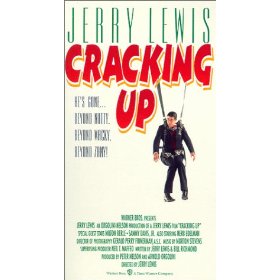
If you’re in Los Angeles in June (I won’t be), you might want to check out The Cinefamily‘s Jerry Lewis retrospective (page down), playing on Saturdays. This culminates in his last feature to date, Cracking Up (the poster for its European version is seen below).
I’m cited in the ad for the latter film in the following way: “In some ways it comes off as so formally brazen that the end result of this Airplane!-style gag-fest was avant-garde enough to appeal to academically inclined critics and Lewis lovers — Jonathan Rosenbaum, for example, sandwiched Cracking Up between Bresson’s L’Argent and Kiarostami’s Fellow Citizen on his list of best films of 1983 (the only English-language pick on the list).” I’m not sure what makes me “academically inclined,” but for the record, the (alphabetical) list of my favorite films of 1983 [in Essential Cinema] also includes, immediately below Fellow Citizen, Potter’s The Gold Diggers, Wenders’ Hammett, Dante’s It’s a Good Life [from Twilight Zone: The Movie], Scorsese’s The King of Comedy, Burnett’s My Brother’s Wedding, and, a bit further down the list, Wenders’ The State of Things, Brownlow and Gill’s The Unknown Chaplin, and Cronenberg’s Videodrome — all of them “English-language picks”. Read more
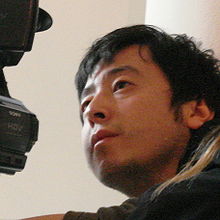
Recommended Reading: “Long Shot” by Evan Osnos. in the May 11, 2009 issue of The New Yorker. Not so much for critical insights into the films as for biographical information that one wouldn’t likely come across elsewhere, at least in English. [5/11/09]
 Read more
Read more

Go here.
In Time magazine, no less. And it’s nice to see Hendrik Hertzberg linking and endorsing this argument. Let’s see if we can create a groundswell.
P.S. I stole the photo of Klein from Russ Limbaugh. Thanks for the help, man. [4/4/08] Read more
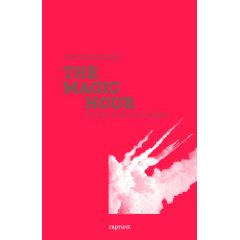
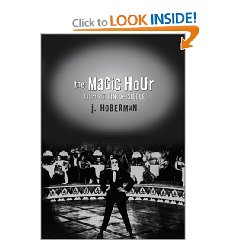
It’s very good to have a selection of J. Hoberman’s film criticism finally available in French translation, so Emmanuel Burdeau should be commended for bringing out a French edition of Hoberman’s most recent (2003) collection, moderately priced at 14 Euros and translated by Marie Mathilde Burdeau, in his film book series published by Capricci (which has also published the wonderful Les Aventures de Harry Dickson —one of the first things I wrote about on this website). The only thing that gives me pause is that only 16 of Hoberman’s articles have been included in the French edition, leaving roughly 50 other pieces in the same book untranslated and unacknowledged in any way. (More precisely, this French edition includes only 14 of the 66 separate items in the original, though it adds two others.) This must be a reflection of the ongoing recession on both sides of the Atlantic—even if Hoberman’s given name has been upgraded in French from J. to Jim. [3/31/09] Read more
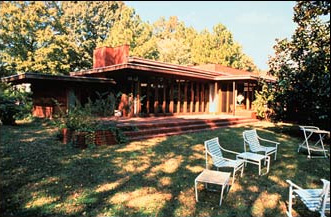
Hi Jon,
The photo is mine, provided years ago to Alabama Public Television when they were shooting “Rosenbaum House in Alabama” and to Debbie Wilson, who runs the Florence tourism promotion office. PBS picked it up when they did their FLLW series in 1999. The photo (yes, it is chez Rosenbaum) has been on the web in reverse since October 13, 1999. As in this instance, you can sometimes check the provenance of a website through the Wayback Machine ( http://web.archive.org). I never bothered to write to correct the error of the left to right reversal.
Love,
Alvin
P.S. A much better item on the PBS website is FLW’s rendering of the house. Find it at http://web.archive.org/web/20041229231416/www.pbs.org/flw/buildings/usonia/usonia.html
A
 Read more
Read more

Cruising on the Internet, I just accessed on the PBS website a photograph that purports to be an exterior view of the Usonian house that I grew up in, designed by Frank Lloyd Wright, in Florence, Alabama. I got there by following a link on the Wikipedia entry for “Stanley Rosenbaum Residence”—an entry that incidentally includes an accurate view of the exterior, reproduced directly below:

I know my memory isn’t playing tricks on me—not only because I know the house by heart, after living there for the first 16 years of my life, but also because I visited it quite recently, earlier this month. The first photograph is clearly the exterior of another, albeit quite similar, Wright house, and I’m sorry that I’m not enough of a Wright expert (as my brother Alvin is) to be able to identify it precisely. If you look closely at the row of glass doors on the left in the second photograph, you can barely see the thin line of a stone terrace just underneath them that is remarkably similar to the one seen much more clearly in the top photograph that juts to the right in a diagonal line and then ends, with three steps just below it. Read more














